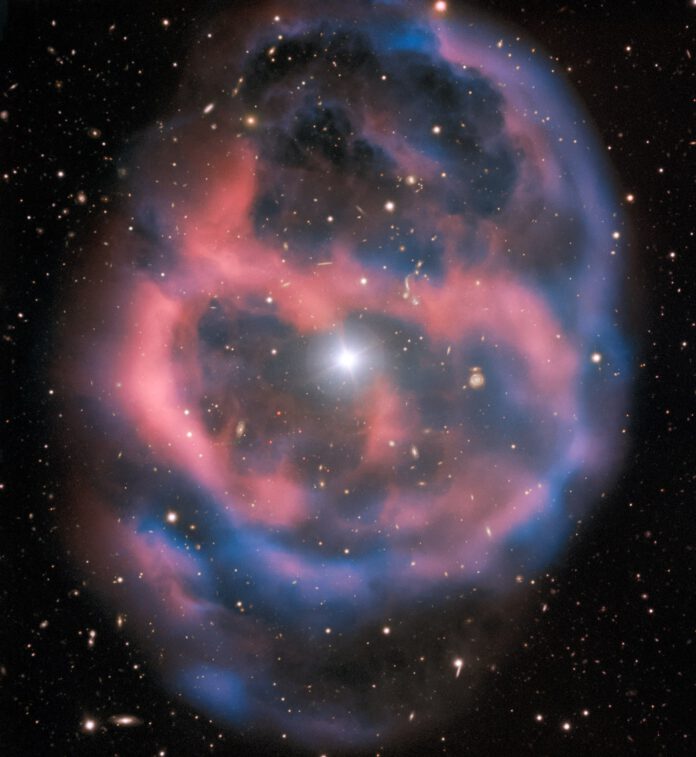
The faint nebula surrounding the red giant star ESO 577-24 is only visible for a mere 10,000 years, but its final breath has definitely been immortalized by the Very Large Telescope.
This Week in Space Photography
The space photo of the week showcases a stunning capture of a planetary nebula approximately 1,400 light-years away from Earth. The dead giant star at the heart of the nebula has ejected its outer gas layers, leaving behind a hot white dwarf. From now onward, this remnant will cool and fade.
Upon opening and zooming into the photo, you would also see scores – potentially hundreds – of background galaxies. These are star systems that lie behind the nebula and are visible through the clouds of gas.
What Is a Red Giant?
Red giants are stars in the final stages of their life cycle. They have exhausted their hydrogen supplies at their core and consequently swell in size. They expand to hundreds of times their original size, potentially even engulfing nearby planets. Afterwards, red giants shed their outer gas layers. A few billion years from now, even the sun will swell into a red giant and swallow up Mercury, Venus, and Earth.
Only Visible with a Powerful Telescope
The planetary nebula seems clearly visible in this photo from ESO’s Very Large Telescope, but if you were to gaze at this section of the sky in the constellation Virgo with the naked eye, spotting this object would be challenging. Watch the video below, and you will see how much zooming in is required for the nebula to appear in the frame.
The good news is that the death of a star may also bring about new opportunities for life. Who knows, the gas layers from the red giant star may someday be recrafted into a new star.











